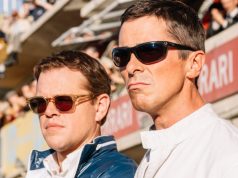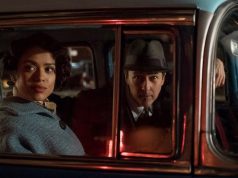“The Way Back” begins with a spoiler: In 1941, three men trudged into India after walking 4,000 miles from Siberia. This is their story. Our question as we watch the movie: which three will it be?
The film is loosely based on Slawomir Rawicz’s 1956 book “The Long Walk,” a bestselling account of the author’s journey after escaping a Russian gulag. The story’s veracity has been rather strenuously questioned since then, and the film is only “inspired by” the book anyway, so it’s best not to keep thinking, “Wow, this really happened!,” because a lot of it probably didn’t.Â
Fiction or not, though, it’s an amazing story of survival, directed by Peter Weir (“The Truman Show,” “Witness”) with his usual serious, workmanlike skill. It’s a good enough film, and what keeps it from being better might be endemic to the story. The tale of a 4,000-mile walk is almost unavoidably going to have some lag time.Â
The benefits of putting a prison camp in Siberia are obvious, as summarized by one of the guards early on: “Nature is your jailer, and she is without mercy.” Even if inmates escape from the gulag itself, they have a few hundred miles of frozen wilderness to contend with.
Having established the stakes, “The Way Back” proceeds to tell about some people who do escape from the gulag and who do face the natural perils thereafter. They are an odd assortment of different types, including a Polish dissident (Jim Sturgess), a cryptic American (Ed Harris), an actual criminal (Colin Farrell) — most of the inmates are merely political prisoners — and a handful of others. (Sebastian Urzendowsky, Alexandru Potocean, Dragos Bucur, and Gustaf Skarsgard — a German, two Romanians, and a Swede — round out the multinational cast.) There are some fatalities that thin the ranks, and a teenage girl, played by Saoirse Ronan (“Atonement”), who joins the group mid-trek.
For a good long while the film’s depictions of hardship and deprivation are the kind that inspire awe and respect in audience members, who will feel very grateful to have warm places to sleep tonight. (If they do not have warm places to sleep tonight, at least they can take comfort in knowing they are not in Siberia. If they are in Siberia, then I don’t know what to tell them.) Weir, working from a screenplay he co-wrote with Keith R. Clarke, conveys the toll of such a journey — physically, mentally, hygienically — realistically without dwelling on the grosser aspects. He doesn’t pull punches, though. This isn’t the kind of long-distance movie trek where everyone arrives at their destination with smooth skin and healthy teeth. (Not for nothing was the film shortlisted for the Oscars’ makeup category.)
After a while, though, the journey grows repetitive. I know, I know — think how it must have felt for them. But from a storytelling standpoint, this is a problem. After conquering one obstacle, the group simply faces another one. We got past the freezing cold; now we’re in the boiling desert. Goodbye wolves, hello mosquitoes. There are new challenges, but no new developments or characterization. The dynamic within the group evolves the way you’d expect, tension giving way to camaraderie, and there are some nice, human moments with the band of refugees. The whole thing is beautifully photographed (on location, not in a studio) by Russell Boyd, who won an Oscar for his cinematography on Weir’s “Master and Commander.”
Eventually the film itself is something of an endurance test, and not as rewarding as it hopes to be. But it’s a worthy venture, earnest and well-produced and occasionally gripping.
B- (2 hrs., 6 min.; )





